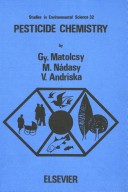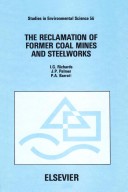Studies in Environmental Science
2 total works
This book provides an overview of the major chemical aspects of pesticides giving detailed descriptions of the various groups of pesticides in current use - insecticides, acaricides, nematocides, rodenticides, fungicides and herbicides. The organic syntheses are discussed in detail, as are the biochemical aspects of the effectiveness and mechanisms of action of these chemical agents. The ecological aspects of the use of pesticides - nowadays an important consideration - are also discussed. The main trends of development in the field are also dealt with, e.g. the development of insecticides which present less of a threat to human beings and animals than the ones presently used, whose point of attack is the nervous system. Research is now concentrated on developing chemical compounds which affect the biochemistry or the special behavioural features of insects, instead of acting upon their nervous system. Newly discovered chemicals with selective action which are still in the developmental and experimentational stages are also described.
The Reclamation of Former Coal Mines and Steelworks
by I. G. Richards, etc., J.P. Palmer, and P A Barrat
Published 1 January 1993
. This book , the result of studies undertaken on behalf of the European Commission, examines the current 'state of the art' techniques for the restoration of despoiled lands arising from the coal and steel industries. It provides technical -guidance to aid the process of the regeneration of the coat and steel communities of Europe. The chapters are fully cross referenced in the text, and where more technical or scientific detail is provided, this has been placed into boxes rather than in the main text. The book will be of great interest to environmental scientists and engineers, and to all those who are involved in mining,, mineral waste. soil pollution and, waste management and disposal.

